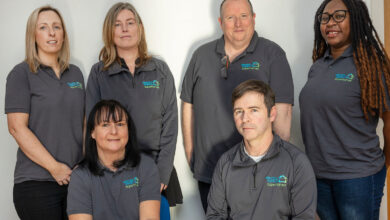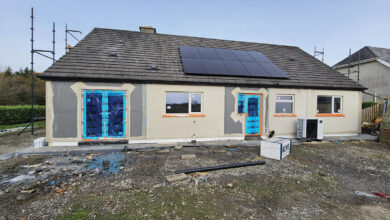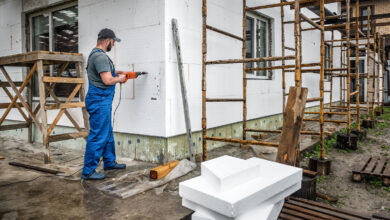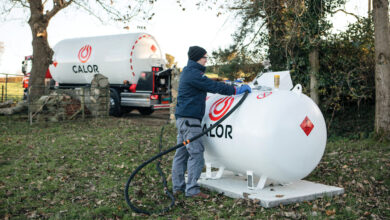Tracking Ireland’s retrofitting journey
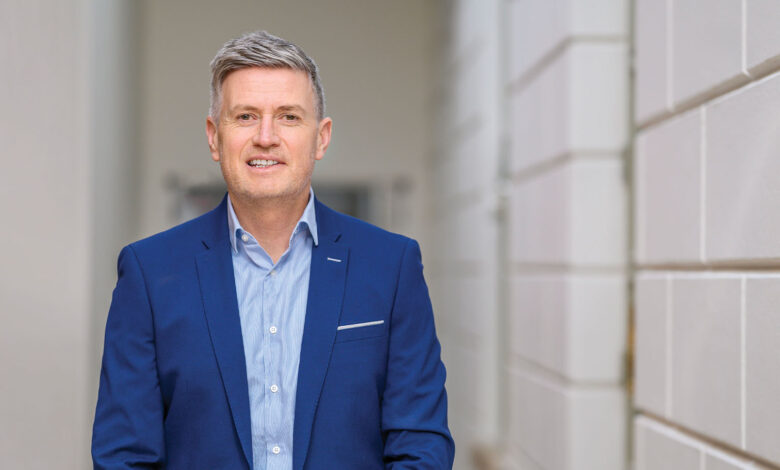
Barry Quinlan, Assistant Secretary at the Department of the Environment, Climate and Communications (DECC) with responsibility for built environment, retrofit, and heat policy, tells eolas Magazine about the steps ahead in Ireland’s retrofitting journey.
Retrofitting in Ireland has gone from being a niche preoccupation to priority national policy. Quinlan began his role in late 2021, a period marked by the onset of the war in Ukraine, which underscored the urgent need to reduce dependence on the importation of fossil fuels and transition to a net zero economy.
While admitting that the scale of the challenge – retrofitting hundreds of thousands of homes while simultaneously building new ones – seemed “daunting”, he says that he has been “consistently impressed” by the sector’s growth and adaptability.
“The numbers speak for themselves. Between 2021 and 2023, spending on retrofitting increased by a staggering 220 per cent, rising from €99 million to €325 million. The number of upgrades more than doubled, with 48,000 homes retrofitted in 2023 compared to just 15,220 in 2021.
“The success of the free upgrade Warmer Homes Scheme, which has seen a 160 per cent increase in activity, highlights the programme’s impact on lower-income households.”
These achievements, he states, have placed Ireland “at the forefront of retrofit innovation globally”, with other EU countries and the UK looking to Ireland as a model of best practice.
“The allocation of a total of €8 billion to the National Development Plan ensures predictable annual increases, enabling DECC and the Sustainable Energy Authority of Ireland (SEAI) to plan effectively.”
Credible plans and strong teams
According to Quinlan, success on Ireland’s retrofitting journey stems from two critical factors: a credible, well-funded plan and a strong delivery team.
He says that that the National Retrofit Plan benefits from long-term financial certainty. “The allocation of a total of €8 billion to the National Development Plan ensures predictable annual increases, enabling DECC and the Sustainable Energy Authority of Ireland (SEAI) to plan effectively,” he says.
Quinlan also says that partnership between the State and industry has been “instrumental”, adding: “The attitude of DECC and SEAI to driving delivery with the industry is really important. We have faced challenges together and dealt with them swiftly to keep the programme moving forward.”
Challenges and solutions
Despite the progress, significant hurdles remain. Quinlan outlines several key challenges and the solutions being implemented:
- Demand generation: Many homeowners perceive retrofitting as costly or overly complex. To combat this, the Government offers grants covering up to 30 per cent of the cost – a level of state support significantly higher than exists in other countries. Awareness campaigns and efforts to reduce the “hassle factor” are also helping to drive demand.
- Financing: For those ineligible for free upgrades, financing remains a barrier. To address this, DECC introduced a €500 million low-cost loan scheme in collaboration with the Strategic Banking Corporation of Ireland (SBCI), the European Investment Bank (EIB), and commercial banks. With rates as low as 3 per cent, this scheme aims to make retrofitting more accessible to middle-income households.
- Supply chain and skills: The rapid pace of retrofit activity has strained the supply chain and workforce. In response, DECC has partnered with the Department of Further and Higher Education, Research, Innovation and Science to develop training programmes and financial incentives for upskilling. This ensures that workers can retrain without losing income.
- Governance and oversight: As the programme scales, robust governance is critical. DECC’s quarterly reports provide transparency, dispelling myths and allowing stakeholders to monitor progress.
Vision
While Quinlan commends the sector for its achievements, he emphasises that Ireland is still “in the foothills” of its retrofit journey. The goal of retrofitting 500,000 homes by 2030, with 400,000 adopting heat pumps, will require “another leap in ambition and innovation”.
The next phase will involve addressing more complex retrofits and deeper energy upgrades. Quinlan points out that some of the “low-hanging fruit” has already been picked, meaning future projects will require greater coordination and investment.
However, he expresses confidence in the sector’s ability to rise to the challenge, particularly given the political support retrofitting has garnered.
Quinlan calls on industry leaders to be “ready and be ambitious”. “With funding secured and demand continuing to grow, the onus is now on the sector to deliver at scale,” he says, asserting that businesses must be prepared to invest in skills, expand capacity, and prepare for “the next wave of activity”.
Political support
One of the programme’s greatest strengths, Quinlan asserts, is its cross-party political support, pointing to the fact that there were significant retrofit policy proposals in all the major parties’ general election manifestos.
Quinlan says that this political consensus, combined with Ireland’s strong economic performance, provides “a stable foundation for the sector’s growth”.
Concluding, Quinlan says that Ireland’s retrofit programme is “not just a climate initiative”, adding: “It is a transformative economic opportunity. By reducing emissions, improving energy efficiency, and creating jobs, it delivers benefits across society. While challenges remain, the sector has proven its resilience and adaptability.”
He summarises: “With strong foundations in place, Ireland is well positioned to achieve its retrofit targets and set a global standard for sustainable building practices.”

